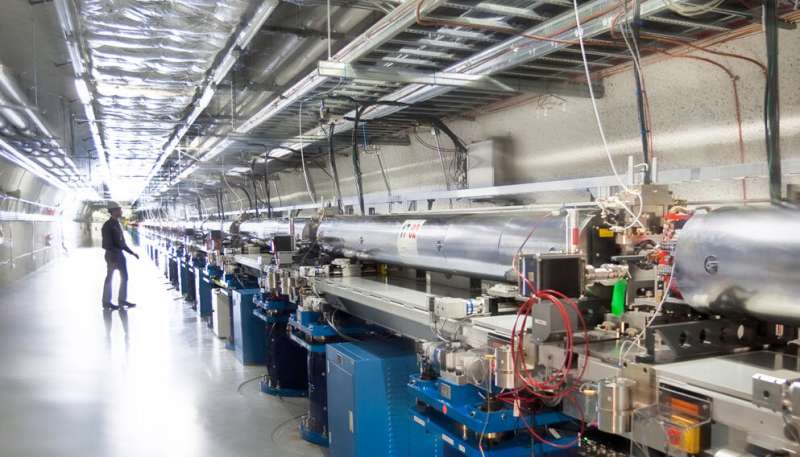Phase-change materials from smartphones may lead to higher data storage, energy efficiency

Phase-change materials that are used in the latest generation of smartphones could lead to higher storage capability and more energy efficiency. Data is recorded by switching between glassy and crystalline material states by applying a heat pulse. However, to date it has not been possible to study what happens at the atomic level during this process.
In a paper published in the June 14 edition of the journal Science, a group of scientists, led by researchers from European XFEL and the University of Duisburg-Essen in Germany and including researchers from Lawrence Livermore National Laboratory (LLNL), describe how they used the capabilities of the X-ray free-electron laser at the Linac Coherent Light Source (LCLS) to show that a transition in the chemical bonding mechanism enables the data storage in these materials. The results can be used to optimize phase-change materials for faster and more effecient data storage technologies. They also provide new insights into the process of glass formation.
"With the increasing amount of data that we are storing in our devices such as smartphones today, we need new techniques to store even more information," said LLNL's Stefan Hau-Riege, a co-author of the paper.
Phase-change materials made of the elements antimony, tellurium and germanium can be used to store increasingly large amounts of data, and do so quickly and energy efficiently. They are used, for example, in replacements for flash drives in the latest generation of smartphones. When an electrical or optical pulse is applied to heat these materials locally, they change from a glassy to a crystalline state, and vice versa. These two different states represent the '0' and '1' of the binary code needed to store information. However, to date it has not been possible to resolve how exactly these changes of state occur on an atomic level.
In an experiment at the LCLS, the team used a technique called femtosecond X-ray diffraction to study atomic changes when the materials switch states. In the experiment that took place before European XFEL was operational, an optical laser was first used to trigger the material to change between crystalline and glassy states. During this extremely fast process, the X-ray laser was used to take images of the atomic structure. Only X-ray free-electron lasers such as LCLS or European XFEL produce pulses that are short and intense enough to capture snapshots of the atomic changes occurring on such short timeframes. The scientists collected more than 10,000 images that shed light on the sequence of atomic changes that occur during the process.
To store information with phase-change materials, they must be cooled quickly to enter a glassy state without crystallizing. They also must stay in this glassy state for as long as the data are stored. This means that the crystallization process must be very slow to the point of being almost absent, as is the case in ordinary glass. At high temperatures, however, the same material must be able to crystallize very quickly to erase the information. That a material can form as stable glass but at the same time becomes very unstable at elevated temperatures has puzzled researchers for decades.
In their experiment, the researchers studied the fast cooling process by which a glass is formed. They found that when the liquid is cooled sufficiently far below the melting temperature, it undergoes a structural change to form another, low-temperature liquid. This low-temperature liquid can be observed only on very short timescales, before crystallization takes place. The two different liquids had not only very different atomic structures, but also different behaviors: The liquid at high temperature has a high atomic mobility that enables the atoms to crystallize, i.e., to arrange in a well-ordered structure. However, when the liquid passes below a certain temperature below the boiling point, some chemical bonds become stronger and more rigid and can hold the disordered atomic structure of the glass in place. It is only the rigid nature of these chemical bonds that prevents the transformation and—in the case of phase-change memory devices—secures the information in place.
"Current data storage technology has reached a scaling limit so that new concepts are required to store the amounts of data that we will produce in the future," said Peter Zalden, a scientist at European XFEL and co-lead author of the study. "Our study explains how the switching process in a promising new technology can be fast and reliable at the same time."
The results also help understand how other classes of materials form a glass. Similar experiments are already scheduled at European XFEL, where the femtosecond pulses are short and intense enough to capture snapshots of these fast processes.
More information: Peter Zalden et al. Femtosecond x-ray diffraction reveals a liquid–liquid phase transition in phase-change materials, Science (2019). DOI: 10.1126/science.aaw1773
Journal information: Science
Provided by Lawrence Livermore National Laboratory





















